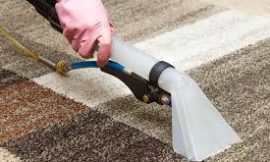
Did you know that approximately 1 in 5 vehicles has mold growing in them at some point? Mold can thrive in damp conditions, and your car is no exception! If you've noticed that your car smells musty or you spot unsightly patches on the upholstery, you're not alone. In this article, we’ll explore straightforward steps to get rid of mold in your car, keeping it fresh and safe for you and your passengers. Let's rev up and dive into how you can tackle this issue head-on!
Understand the Causes of Mold in Your Car
When it comes to mold growth in your vehicle, several common conditions can create the perfect environment. High humidity is a significant factor, especially in warmer climates or during rainy seasons. If your car has leaks, whether it's from worn weather stripping or damaged seals, moisture can accumulate inside, making it a breeding ground for mold.
Spills, too, can contribute. If you’ve accidentally spilled a drink or left food crumbs in your car, these can attract moisture over time, providing even more opportunities for mold to take hold. Pay special attention to materials in your car that are prone to mold, such as carpets and upholstery. These fabrics can absorb moisture and become cozy spots for mold to thrive.
Neglected maintenance plays a significant role as well. Regular checks and upkeep can prevent the buildup of conditions that allow mold to flourish. If you're not routinely cleaning and inspecting your car, it's easier for mold to develop unnoticed.
Symptoms of Mold Presence in Your Vehicle
When it comes to recognizing mold in your car, the first sign is often a musty odor. This distinct smell can indicate that mold is lurking somewhere inside your vehicle.
Next, look for visible signs. You might spot stains or discoloration on fabrics, which can be an indication of mold growth. It’s essential to address these issues promptly, as mold exposure can lead to health risks, including allergies and respiratory issues. If you start to experience symptoms like sneezing, coughing, or skin irritation after being in your car, it might be time to investigate further.
Essential Tools and Materials for Mold Removal
When gearing up for mold removal, certain cleaning supplies are must-haves. Vinegar, baking soda, and commercial mold removers should be at the top of your list. These materials can effectively combat mold growth.
Don’t forget about safety gear! It’s wise to wear gloves and masks while cleaning to protect yourself from mold spores. Additionally, having the right equipment can make a big difference—scrub brushes and vacuum cleaners will be your best friends during the cleanup process.
Step-by-Step Guide to Remove Mold from Your Car
-
Prepare the Area
- Start by clearing out all items from the vehicle. Remove everything from the interior, including personal belongings and trash.
- Choose a well-ventilated and dry location for the cleaning process. This is crucial for effective mold removal and prevention of further infestation.
-
Initial Cleaning
- Begin with a thorough vacuuming to remove loose debris and spores. Make sure to get into crevices and corners where mold might hide.
- After vacuuming, wipe down surfaces with a damp cloth to pick up any remaining dirt and build-up.
-
Apply the Cleaning Solution
- For an eco-friendly solution, mix vinegar and water. If you prefer, you can also use commercial cleaners designed for mold removal.
- Scrub affected areas thoroughly, applying more solution as needed to ensure all mold is removed.
- Drying
- Allow the interior to dry completely to prevent mold from returning. This step is vital!
- On sunny days, open the windows or utilize fans to speed up the drying process. The drier the environment, the less likely mold will return.
Prevention Tips to Keep Your Car Mold-Free
Once your car is free of mold, maintaining a dry interior is key. Regularly check for leaks to catch any potential problems early on.
In humid conditions, consider using moisture-absorbing products like desiccants. Placing these in your car can help keep moisture levels low. Regular cleaning of your car’s interior is also essential; this not only prevents mold from gaining a foothold but also keeps your vehicle looking its best.
When to Seek Professional Help
It’s important to recognize when the mold issue in your vehicle is beyond DIY efforts. If you notice signs indicating a more serious mold infestation, it may be time to call in the professionals.
Additionally, if your car’s interior has sustained damage due to mold—such as warped surfaces or persistent staining—expert cleaning might be required to restore it properly. Professional assistance is also crucial for health safety, ensuring that the mold is removed entirely and your vehicle is safe for you and your passengers.
Conclusion
In summary, taking proactive steps to eliminate and prevent mold in your car is essential for maintaining a healthier environment while you drive. From understanding the causes to using effective cleaning methods and preventive measures, you can ensure your vehicle stays in top condition. If you’re battling persistent mold problems, don't hesitate to seek professional help. Your car is an investment, and keeping it mold-free enhances its longevity and your driving experience! Get started today on your path to a cleaner ride!







